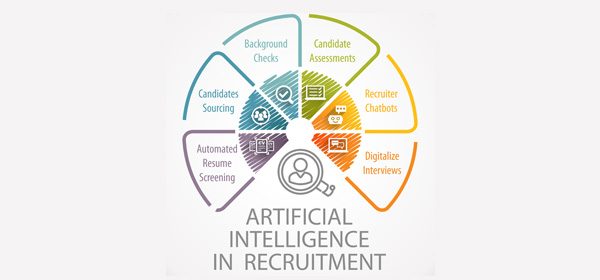Technology is revolutionizing industries all over the world. Automated hiring, for example, is the new trend in the human resources industry allowing employers to facilitate a swifter vetting process for potential candidates. With algorithms that can be tailored to suit a company’s needs and a position’s requirements, it seems automated hiring should be the best way for companies to find quality candidates.
Automated hiring has many advantages to the recruiting and onboarding process, including programmed workflow processes that enable recruiters to increase productivity, accelerate the selection process, reduce hiring costs, and improve background checks and screenings.
Know Your Risks
Like many automated processes in life, from ice makers and bill pay to programmable thermostats and coffeemakers, when it comes to the hiring process, some automations could cause inadvertent or unforeseen difficulties down the road. Given the history of workplace discrimination, some areas are more frequently infringed upon than others. Those areas include, but are not limited to, criminal backgrounds, age, citizenship, disabilities, and families.
Other prime examples that have long been at the forefront of employment discrimination over the years is gender and race. Most recently, Amazon and Google have combatted lawsuits regarding some form of employment bias. Amazon’s lawsuit involved bias against women applying for engineering roles, due to automated hiring algorithms calculated to exclude women-centered keywords. Google’s lawsuit involved bias against an older demographic as a result of alleged repeated rejection and preference to applicants under the age of 40.
It is important to be aware of the risks of systems and processes, such as automated hiring, that can significantly impact the business. By educating yourself of the risks, you take a forward-thinking approach to resolving and identifying issues, effectively diffusing them before they arise.
Am I Discriminating?
Like the old adage: “It’s better to be safe than sorry,” that is applicable to automated hiring and potential discrimination cases. The best way to ensure you aren’t unintentionally discriminating is to be proactive in your solutions. You may also consult the EEOC to determine best practices to determine if your systems and processes are compliant with EEOC standards, as well as the process for which a claim is investigated to prepare for worst-case scenarios.
Proactive Problem Solving
Currently, there are many precautions in place to prevent and combat employment discrimination, specifically in automated hiring. The best way to stay ahead of the potential threat is to be prepared for all situations. Here are a few methods that companies can implement to ensure compliance in automated hiring:
- Upgrading and/or modifying automated systems to remove potential discrimination markers, i.e., “women’s” or other discriminatory keywords, no limit on ages or years for education, personal residence location, etc.
- Implementing an applicant tracking system (ATS), which provide capabilities to notify the administrator of updates to laws for compliance purposes and meeting diversity requirements. ATSs should be closely monitored to ensure the same potential bias flaw in its algorithms through updating and modifying consistently.
- Testing the system to identify any complications that could occur or potential loopholes that could result in discrimination. While it might require a bit of a time commitment, it could save you and your company a lot of money in a discrimination-related settlement.
- Sticking to the basics when it comes to candidate and interview screening questions (i.e., local candidate, authorized to work in U.S., certifications/licenses, etc.), assessment tests (that only test skills required for job), and rejection letters. Vagueness and simplicity in these areas can end up protecting you in the long haul.
- Having an HR, legal, and/or risk and compliance department review the system and/or processes for any potential risks. Sometimes having an outside, expert eye view something you’ve been working on can provide more constructive feedback to guarantee compliance with all employment laws.
The goal of automated hiring is to help businesses find talented employees that not only meet the needs of the role, but are a good fit for the existing company culture and established teams. It’s a full-time job! Insured Solutions is happy to be your partner in recruiting, hiring, and onboarding efforts. From simply offering consulting services and guidance to taking a leading role in any of the processes, our teams are able to help ensure your new hires are as productive as possible from day one. Contact us to learn more.









